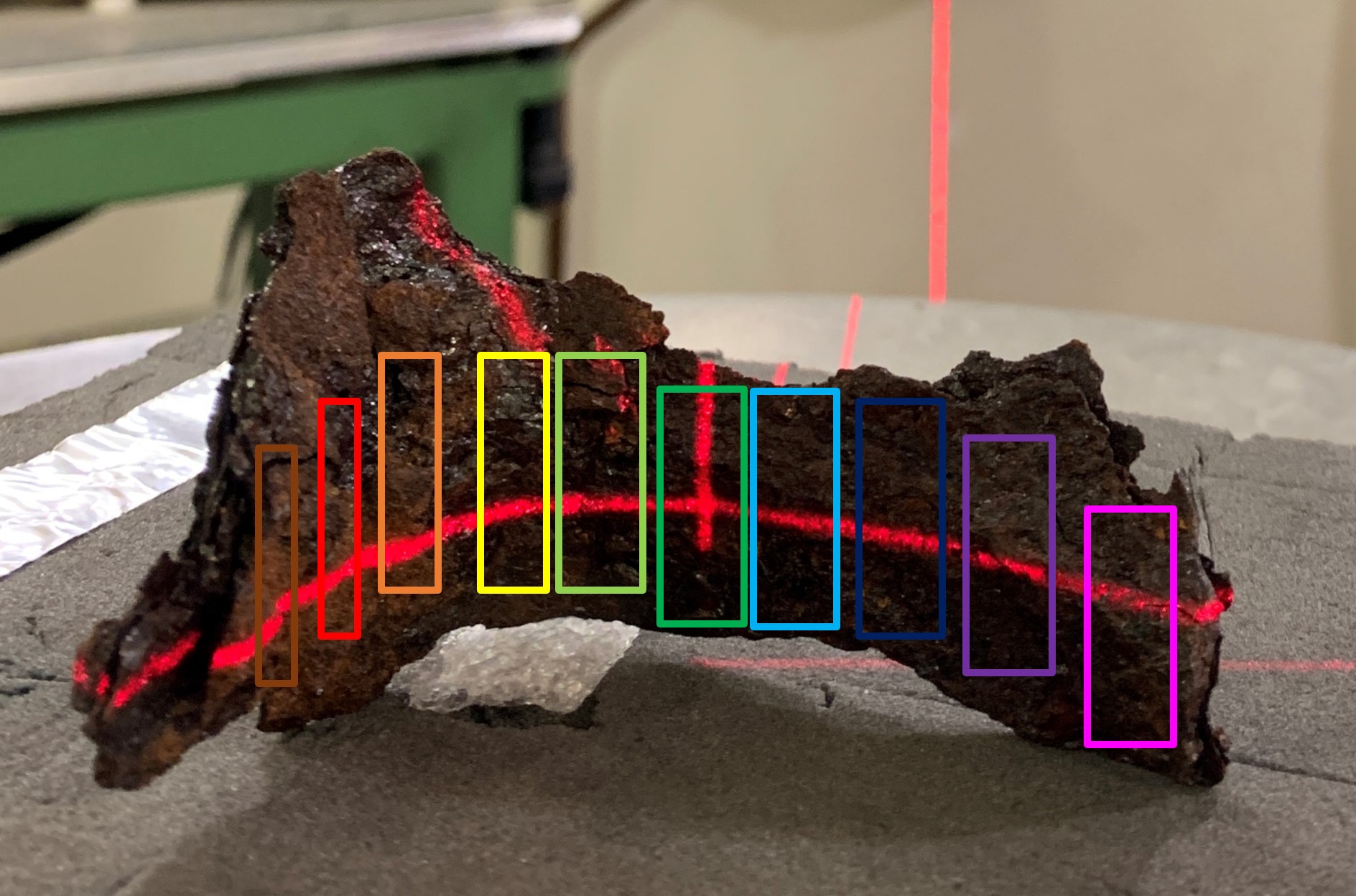In the Netherlands, a few bent iron swords from the Early Iron Age Hallstatt C period were discovered. The most famous bent sword was a Mindleheim-type sword found ‘curled-up’ inside a bronze situla in the Chieftain’s burial in Oss in 1933. In addition to the sword from Oss, several other bent swords dating to the Hallstatt C period have been found in the Netherlands, for example, the sword-grave of Heythuizen and the wagon-grave of Wijchen.
The question remains, how were these swords bent, by brute force or by heating and hammering? Could this have been done at the place of burial or was it necessary to bring the sword to a smithy? Knowing how the swords were bent, implies the knowledge, skills and equipment of people in this period and thus adds to the archaeological framework around the Hallstatt culture and burials found in the Netherlands.
In order to obtain metallurgical information about the structure of these swords, we performed a combined analysis of the non-destructive time of flight neutron diffraction and destructive electron microscopy (SEM -EBSD and -EDS). SEM was used on mock-up samples to simulate the effect of bending.
Neutron diffraction was used to characterise the material in terms of crystalline phases and microstructure. In particular, we aimed at understanding how the sword was bent by identifying residual stress. Specifically, by measuring the distribution and the intensity of the residual stress it is possible to distinguish if the sword was bent with or without heating. Residual stresses are determined by analysing the broadening of the ferrite diffraction peaks. During these experiments some obstacles were encountered due to a paraloid conservation treatment on the sword from the Wijchen excavation site, that induced a very high background thanks to its high hydrogen content. To clarify this situation, additional neutron diffraction measurements were carried out on pieces of the Wijchen Sword that underwent restoration and conservation treatment, on untreated pieces of the sword and on clean, by removing the conservation treatment, pieces that were not integrated into the restored museum object. The results gives insights into the effect of the paraloid conservation treatment on the neutron diffraction analyses and possibly on the metallurgy of treated objects. The results will contribute to the improvement of a research and conservation strategy of archaeological objects.

SEM images of the Mock Bent Sword D1. Three microstructures with different fractions of ferrite and cementite are observed.
A) only ferrite,
B) ferrite grains and pearlite (ferrite + cementite films) grains,
C) large pearlite grains and small ferrite grains (needle shaped).

Piece of ancient sword during alinement of neutron diffraction.